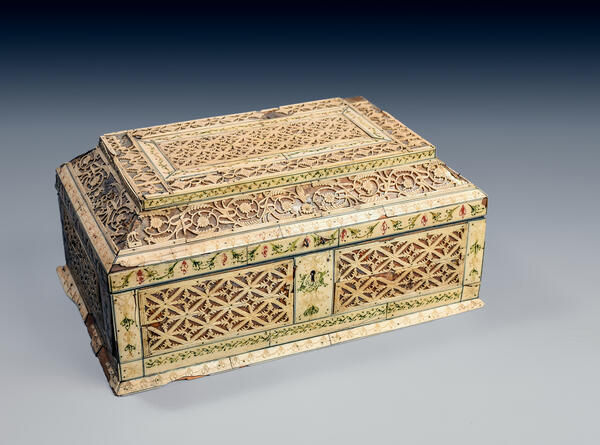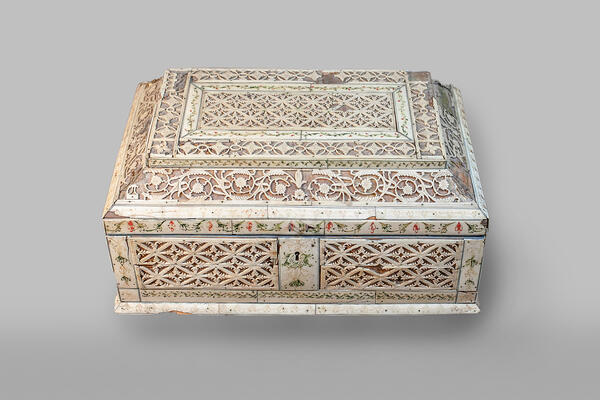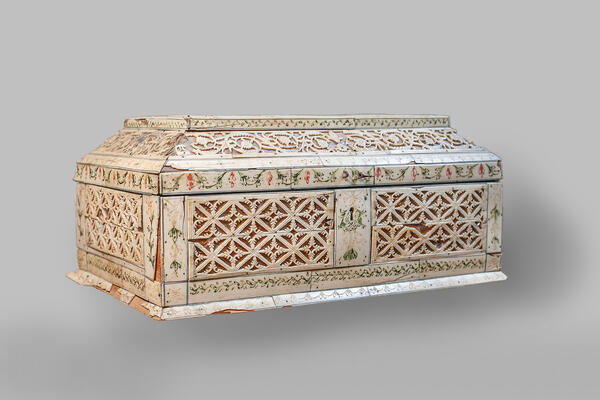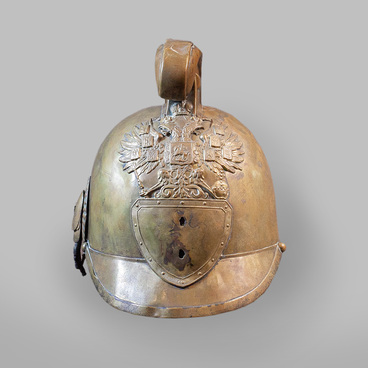A carved bone casket is one of the most beautiful and complex examples of bone carving art. Caskets made of bone are considered the most difficult products to make. The technique of making carved jewelry can be traced back to ancient times. Archaeologists often find carved bones with patterns of various complexity.
Experts believe that this art reached its peak in the 17th and 18th centuries. It was then that the craftsmen learned how to use ivory for making elegant caskets with intricate patterns, as well as very thin hand fans and panels with ornate interwoven lines. The distinctive shapes, inserts depicting animals, birds, and other images, as well as engraving make these carved bone artworks easily recognizable. They were created using ivory from mammoth and elephants. These boxes are characterized by great artistic merits.
Caskets made of carved ivory were intended for the most eminent customers. They embellished the interior of wealthy merchant houses, raising the status of their owners, and were used as part of the bride service that the groom sent to the bride before the wedding.
Graceful bone caskets first appeared in Vyatka in the interior of the living room of the famous Vyatka musician Vladimir Alexeyevich Senilov. In the big hall of the Senilovs’ house, there was a concert grand piano, and the young musician who loved collecting folk songs could often be seen behind that piano. The Senilovs loved music, and in the evening, Vyatka musicians would often gather at their place, organizing concerts and musical nights.
In 1895, Senilov entered the Law School at St. Petersburg University, while also continuing to study music, attend concerts, and meet musicians. At one of the concerts, he met Nikolai Andreyevich Rimsky-Korsakov, a professor at the Saint Petersburg Conservatory, who advised him to continue his musical studies. In 1906, Senilov graduated from the conservatory. He worked a lot in different genres: opera, chamber music, and music for theatrical productions. One of the critics wrote,
Experts believe that this art reached its peak in the 17th and 18th centuries. It was then that the craftsmen learned how to use ivory for making elegant caskets with intricate patterns, as well as very thin hand fans and panels with ornate interwoven lines. The distinctive shapes, inserts depicting animals, birds, and other images, as well as engraving make these carved bone artworks easily recognizable. They were created using ivory from mammoth and elephants. These boxes are characterized by great artistic merits.
Caskets made of carved ivory were intended for the most eminent customers. They embellished the interior of wealthy merchant houses, raising the status of their owners, and were used as part of the bride service that the groom sent to the bride before the wedding.
Graceful bone caskets first appeared in Vyatka in the interior of the living room of the famous Vyatka musician Vladimir Alexeyevich Senilov. In the big hall of the Senilovs’ house, there was a concert grand piano, and the young musician who loved collecting folk songs could often be seen behind that piano. The Senilovs loved music, and in the evening, Vyatka musicians would often gather at their place, organizing concerts and musical nights.
In 1895, Senilov entered the Law School at St. Petersburg University, while also continuing to study music, attend concerts, and meet musicians. At one of the concerts, he met Nikolai Andreyevich Rimsky-Korsakov, a professor at the Saint Petersburg Conservatory, who advised him to continue his musical studies. In 1906, Senilov graduated from the conservatory. He worked a lot in different genres: opera, chamber music, and music for theatrical productions. One of the critics wrote,






